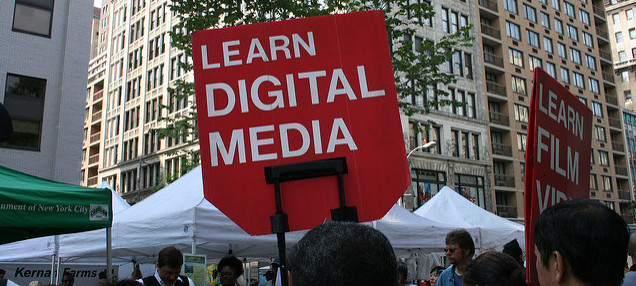Quick Tip Wednesday: How to Set Up a Gratitude Month
Welcome back to Quick Tip Wednesday!

"To improve education, that is our goal. What we truly need to advance is a tool for teachers, with which they can engage in new strategies, communicate with one another, and demonstrate their learning. Something to turn our teachers from mere humans, to chrome warriors." - Benjamin Franklin, 1754
So...that's not a real quote--and you likely picked up on that. But had it been transposed over a picture of a classroom of engaged students, written in some "bespoke font," posted on multiple sites, you may have thought twice. With a couple clicks of the mouse, false information can be repackaged, given credence, and even vouched for by an audience (albeit a false one). The reality is, anything is possible on the internet, and for all of the positive information and knowledge shared across the web, there's an equal amount of garbage.
In some cases, it's easy to spot. Unfortunately, with social media and content gone viral, false information can spread like wildfire. While rules of conduct exist on the web, they're nowhere near as stringent as ethics codes that dictate what's printed in our newspapers, or said on our television networks--the internet is basically the Wild West of the media world. As our capacity to create and share content grows each day, so should our emphasis on media literacy.
According to the Media Literacy Project, media literacy is "the ability to access, analyze, evaluate, and create media." In order to think critically about media, be it online or in print, we must be able to understand where it came from, who created it, what their message/purpose is and how it influences its audience, intended or otherwise.
If you ask a student how to accomplish an unfamiliar task, or to summarize a complex event, their first instinct is likely to Google it, and to click on whatever pops up first (or on a Wikipedia article!). Of course, this is usually the fastest way to access information, but it isn't necessarily the most accurate or comprehensive. This doesn't matter when you want to figure out how long to hard boil an egg; but for school assignments, or an unbiased account of current events, students need to be taught where and how to get credible information. General guidelines for finding credible online sources include:
Analysis and evaluation involves breaking media down into separate components: recognizing the opinions, biases, and facts that make up content. Is a news article simply stating a fact, or is it designed to cast a certain light on its subject? Is a product review video a straightforward survey, or does the creator have an affiliation with one of the product manufacturers?
The simplest way to start analyzing media is by putting it through a who, what, when, where, why and how filter. Of course, there are many other ways to look at content: what does it mean or say in terms of race, gender, socioeconomics, religion, or politics? How does the content creator relate to their subject? Equally important is evaluating your own response, recognizing your own biases and how this impacts your decision to endorse or reject content. For more information, read the "5 Questions Students Should Be Asking About Media," from Common Sense Media.
Teaching students how to create media is about much more than giving them access to video editing software or encouraging them to start up a blog. Bringing in digital citizenship principles is important here: What types of information are students creating or sharing? Is their intention to persuade or educate? Encouraging students to identify their purpose will not only promote ethical creativity, but help them to better communicate their ideas. For a simple way to introduce some of these concepts, check out this "Create Your Own Ad" activity from PBS.
Media literacy is finally on lawmakers' radars--in fact, California Senator Bill Dodd's Media Literacy bill (SB-135) was just passed in the state Senate on May 30. In a press release from April, Dodd said, "Developing a comprehensive media literacy curriculum is critical to combating fake news. While information has become more accessible than ever, many lack the tools to identify fake or misleading news and information. By giving students the proper tools to analyze the media they consume, we can empower them to make informed decisions." Media literacy may be mandated in the future--but there's no reason to wait to introduce it in our classrooms.
Image attribution
Site: flickr.com [Image 1]
.png)
Welcome back to Quick Tip Wednesday!

Mid-Year Reflection: Your Secret to a Stronger Second Semester
A great way to get your learners engaged in your Alludo program is by keeping the content in your program up-to-date and relevant. Rebecca has...